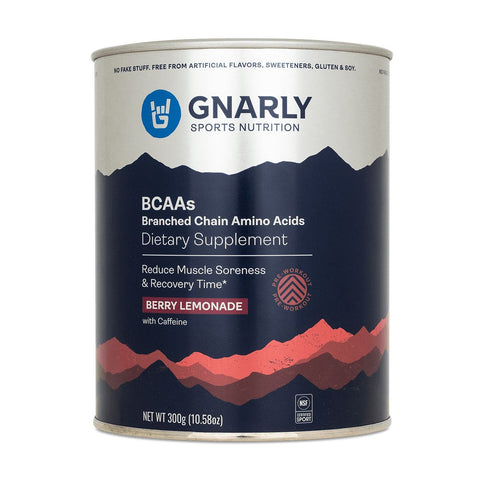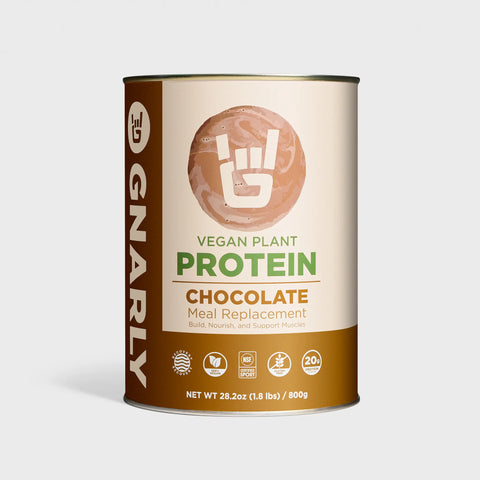Mother nature is our playground where we’re constantly pushing our possible. Until recently, many believed that climate change mainly impacted the stability and diversity of mother nature's playgrounds. Although true, climate change also directly affects the health and safety of adventure athletes who recreate outdoors (4). But interestingly enough: Human activities are the most significant driver of climate change, topping the list is transportation and electricity generation (1, 4, 5, 6).
The challenge humanity faces with global warming is complex, with consequences impacting all of us. But the outdoor industry has the opportunity to promote and mitigate change because if not, all of humanity will pay the price (12).
Health risks caused by our shifting climate can be broken down into direct and indirect health effects. Direct health consequences are caused by drastic increases in temperature and extreme changes to weather patterns, including natural disasters, UV radiation, etc. Indirect health consequences are caused by changes to ecosystems (10). Examples include malnutrition associated with drought and airway disease associated with decreased air quality (10, 12). For the purpose of this article, we will be focusing on the direct health risks to athletes, including increasing temps, rainfall, and ultraviolet radiation.
Temperature
After living in Utah for several years, the summer has been getting noticeably warmer, longer, and drier. Based on what we know about climate change, this is a great example of the impact of increases in the average global temperature on a small scale. Longer, hotter summers like this are expected to keep getting worse. The prolonged increases in summer air temperature, aka "heatwaves," are incredibly relevant to sports (9, 12). Think back to the last time you ran outside during the heat of the day, how did your lungs and heart feel? Warmer air temperatures place a higher strain on the lungs and heart, making training more challenging, and impacting physical performance. Increasing temperatures also make athletes more likely to encounter life-threatening heat illnesses (12).
High temps will make distance races go from uncomfortable to dangerous, as several events in the recent summer Olympics had to be moved to different cities because of this. Progressively increasing heat also interferes with exercise inside. Even treadmill runners can overheat in poorly cooled gyms, making air conditioning essential. And AC use increases energy demand that contributes to rising global temperatures - talk about a double-edged sword (12)!
In areas with high air humidity, our bodies have a more challenging time sweating to cool the body off, increasing our core temperature (8). The noticeable changes to our climate impact athletes’ ability to regulate temperature, making the nightmare of hypothermia and heat stroke a reality (8).
The good news? Long-lasting heat stress can be prevented by training and playing early or late in the day. The best practice is to avoid the hottest times of the day, especially during heatwaves. Drinking adequate amounts of water and electrolytes during, before, and after activities can help keep the body cool when moving, promoting our body's natural ability to regulate thermal temperatures. And consider wearing light-colored, breathable clothing to help stay cool. Overall, self-awareness during your next big adventure is vital. During exercise or training, if you experience any signs or symptoms of heat illness or dehydration, including dizziness, muscle cramping... it's time to get help (2, 11).
Precipitation, Drought, and Extreme Weather
With temperatures creeping higher and higher, accelerated rates of global ice melt have led us to an increase in annual rain and snowfall and increases in major natural disasters (6, 12). Yearly rainfall has increased over land areas worldwide since 1901, accelerating the water cycle (6).
Think back to when you were a kid, how many snow days do you remember having? What about white Christmases? Climate change has also shifted winters' half-life and snowpack stability for the worst (12). Annual temperatures and rainfall changes place a real risk on winter athletes, like skiers and mountaineers. Melting glaciers, avalanches, rockfalls, and crevasses threaten the safety of these athletes and further the instability of these fragile ecosystems. Even worse, more and more athletes have lost their lives because of this. Changes in snowmelt impact water availability, too - threatened water availability is scary to consider. Just because it's raining more each year, it doesn't mean there's more drinkable water available (6).
For you, River Rats, flooding and unexpected changes in water speed impact your safety and determine the survival of animals and plants (including crops) in these areas (6). The Colorado River is extremely sensitive to warming, we’re likely to see the flow drop 1/3rd in our lifetime; an overwhelming reality (7).
Although rain and snowfall have increased during certain times of the year, summers are getting drier. Increasing temperatures and drier summers encourage evaporation; shifts in ocean currents and wind patterns drive rain and snow to certain areas, leading to severe droughts in others (6). With redirected water and weather, high wind, lightning, and drought-related events like wildfires place immediate danger on adventure athletes. Education, planning, and preparation are essential. Know the typical weather patterns for your area, and study up when visiting less familiar places. Avoiding times of day where sudden weather shifts are more likely, like afternoon, and be aware of your surroundings.
UV Radiation
NASA has been keeping a close eye on the sun over the last 30 years. Data collected shows that Ultra Violet (UV) radiation has skyrocketed - no pun intended - due to changes in our atmosphere. Greenhouse gases are the mortal enemy of the stratospheric zone of our atmosphere (1). The stratospheric area acts like the Earth’s sunscreen and works to filter UV radiation vital to life on Earth (3). UV radiation can cause sunburn, prematurely aging, eye and skin damage/cancer, sunstroke, brain swelling (cerebral edema), and meningitis (inflammation of the meninges). UV rays reflect off of snow and water; treat yourself to that new pair of goggles!
On the opposite side, as our winters get shorter, we get to hit the dry trails much earlier, getting us out and in the sun for longer. UV radiation is higher and more prominent as you climb in elevation, especially with less cloud cover and air pollution. It is vital for water (both frozen and liquid) athletes to prioritize protecting their skin and eyes (12). Don’t forget to wear sunscreen while surfing that cream-corn snow, this one is easy to forget. Severe and life-threatening diseases can be prevented by wearing proper sunglasses/goggles, sunscreen, lip balm, and sun-protective clothing, like long-sleeved shirts and head coverings. When these aren’t available, stay in the shade and on surfaces that absorb sunshine instead of reflecting them, pavement vs. snow (11).
For many, considering how climate change will impact our health is scary. Know you are not alone. It is crucial to get support from mental health professionals to navigate your feelings around what is/may happen in the future. In the meantime, knowledge is power. When planning your next big adventure, take the time to do the following…
- When possible, plan strenuous activities avoiding the hottest times of the day.
- Wear breathable, light-colored UV-protected clothing and head coverings, sunscreen, and sunglasses.
- Drink electrolytes and water before, during, and after
- Plan and prepare for unforeseen weather events and educate yourself about unfamiliar areas and the signs and symptoms of heat-related illnesses.
References
- AR4 Climate Change 2007: The Physical Science Basis. IPCC. (2007). Retrieved March 29, 2022, from https://www.ipcc.ch/report/ar4/wg1/
- Centers for Disease Control and Prevention. (2017, September 1). Warning signs and symptoms of heat-related illness. Centers for Disease Control and Prevention. Retrieved March 29, 2022, from https://www.cdc.gov/disasters/extremeheat/warning.html
- Dunbar, B. (2010, March 16). UV exposure has increased over the last 30 years but stabilized since the mid-1990s. NASA. Retrieved March 29, 2022, from https://www.nasa.gov/topics/solarsystem/features/uv-exposure.html
- Dunbar, B. (2015, May 13). What is climate change? NASA. Retrieved March 29, 2022, from https://www.nasa.gov/audience/forstudents/k-4/stories/nasa-knows/what-is-climate-change-k4.html
- Environmental Protection Agency. (n.d.). Climate Change Indicators: Greenhouse Gases. EPA. Retrieved March 29, 2022, from https://www.epa.gov/climate-indicators/greenhouse-gases#:~:text=An%20increase%20in%20the%20atmospheric,atmosphere%20increased%20by%2045%20percent.
- Environmental Protection Agency. (2020). Climate Change Indicators: U.S. and Global Precipitation. EPA. Retrieved March 29, 2022, from https://www.epa.gov/climate-indicators/climate-change-indicators-us-and-global-precipitation#:~:text=On%20average%2C%20total%20annual%20precipitation,of%200.20%20inches%20per%20decade.
- Fleck, J., & Udall, B. (2021). Managing Colorado River risk. Science, 372(6545), 885-885.
- Maloney, S., & Forbes, C. (2011). What effect will a few degrees of climate change have on human heat balance? Implications for human activity. Int J Biometeorol, 55(2), 147–160. https://doi.org/10. 1007/s00484-010-0320-6
- Mücke, H. G., & Litvinovitch, J. M. (2020). Heat extremes, public health impacts, and adaptation policy in Germany. International journal of environmental research and public health, 17(21), 7862.
- Rossati, A. (2017). Global warming and its health impact. The international journal of occupational and environmental medicine, 8(1), 7.
- Schneider, S., Görig, T., Schilling, L., Schuster, A., & Diehl, K. (2019). Die Nutzung von Sonnenbrillen in Freizeit und Beruf. Ophthalmologe, 116(9), 865–871. https://doi.org/10.1007/s00347-019- 0850-1.





